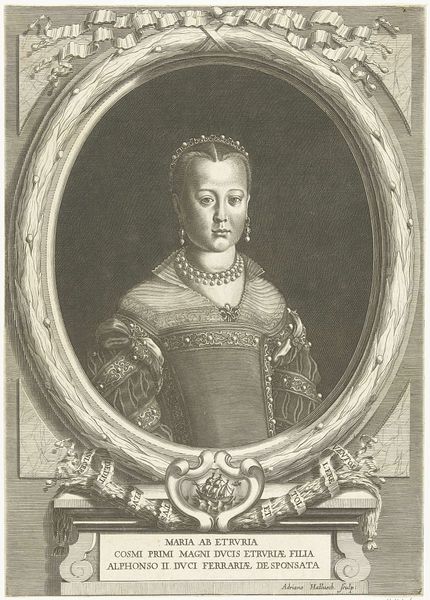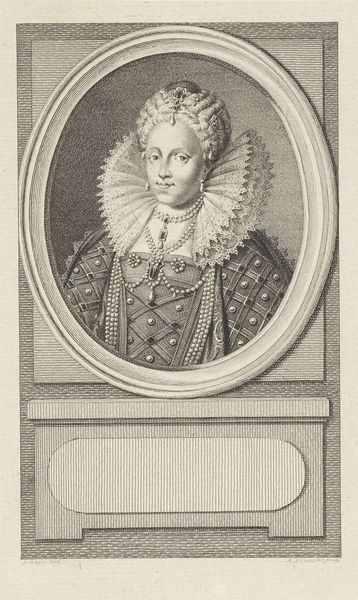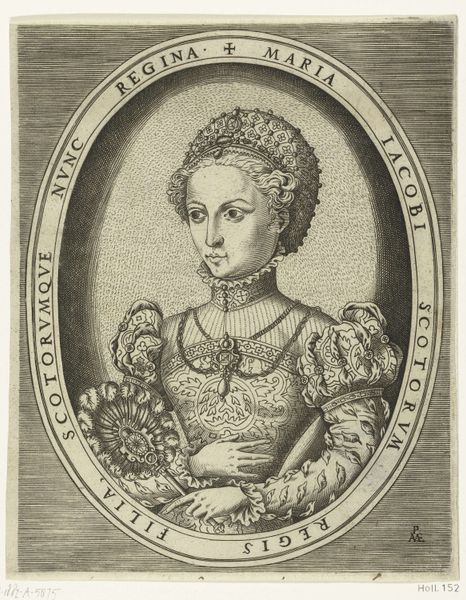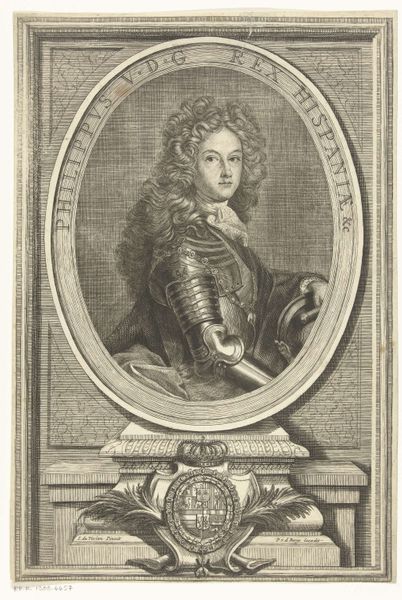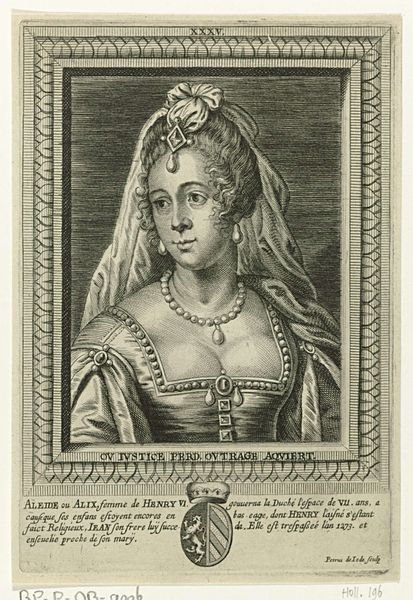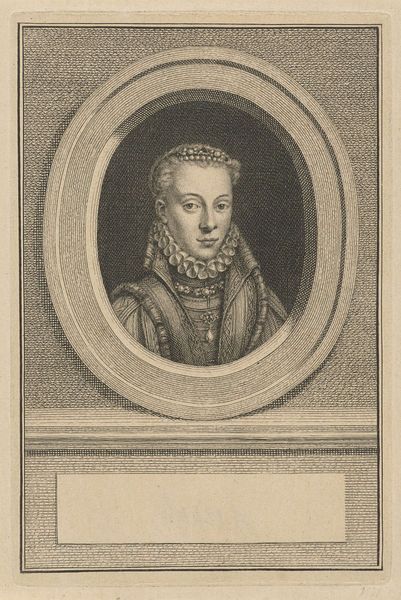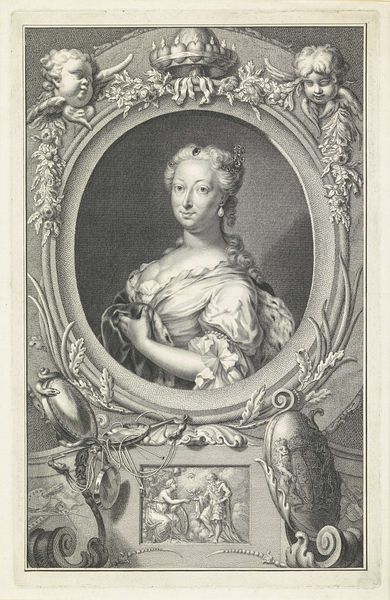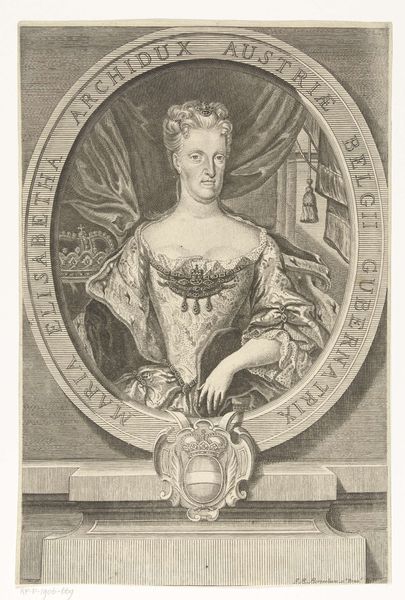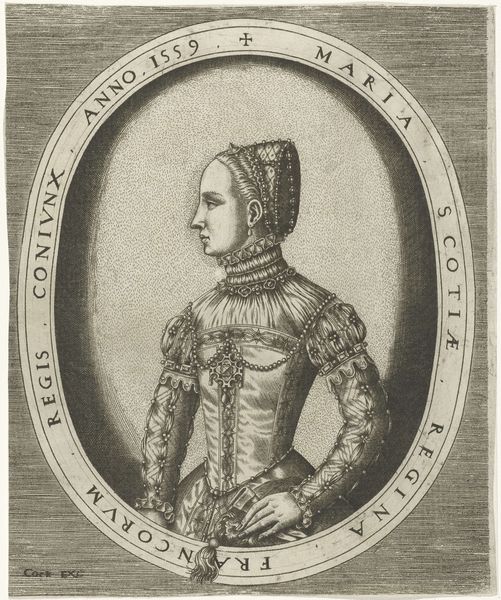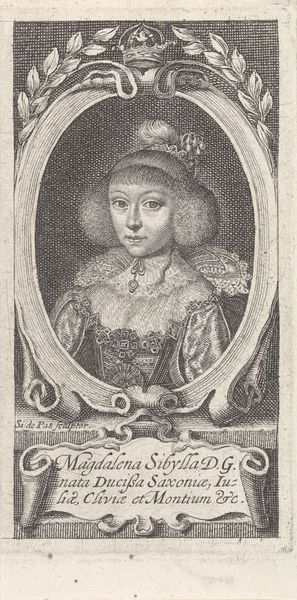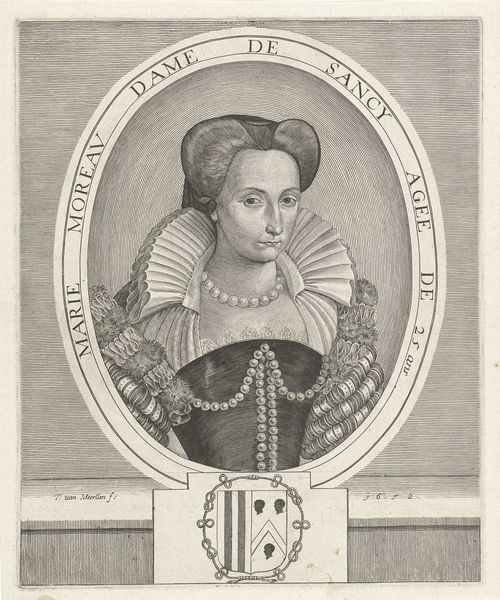
print, engraving
#
portrait
#
baroque
# print
#
figuration
#
history-painting
#
engraving
Dimensions: height 340 mm, width 252 mm
Copyright: Rijks Museum: Open Domain
Curator: At first glance, there’s something rather somber and formal about this composition. The subject's gaze, the high collar, the monochrome... it feels austere, almost restrained. Editor: Indeed. Let's delve into the context. We are looking at "Portret van Lucretia de Medici," an engraving dating from approximately 1647 to 1696 by Adriaen Haelwegh. It captures Lucrezia de Medici, daughter of Cosimo I, the Grand Duke of Tuscany, and wife of Alfonso II, Duke of Ferrara. Curator: Note the meticulous rendering of the fabrics and jewelry, characteristic of the Baroque portraiture tradition. The stark contrasts created through the engraving technique serve to accentuate both the sitter’s features and the texture of her elaborate garments. Consider the symbolic weight imbued into these ornate details. Editor: Absolutely, such portraits served specific functions. Beyond simple representation, they legitimized power. Lucrezia, through her lineage and marriage, connected two significant Italian houses, Medici and d'Este, and that's a political narrative conveyed in visual form here. This print would have circulated among elites reinforcing these connections and consolidating her image as noble. Curator: And further enhancing her noble stature is the frame device within which Lucretia's portrait appears; garlands and ribbons adorn the border surrounding the figure, suggesting wealth, status and celebration. The oval aperture in which Lucretia appears is itself quite telling, indicating an aesthetic refinement. Editor: Considering its historical role and production context as a print intended for distribution is vital. Haelwegh may not have personally known Lucrezia, as she had died almost a century prior to the creation of the image, which introduces the important idea of how visual representations work to maintain certain ideals or truths of a figure over long periods. Curator: Very interesting. I’m struck by how the artist uses light and shadow to model her face, yet retains a certain flatness, a graphic quality unique to printmaking, which somewhat softens her appearance despite all that status signaling! Editor: Well, analyzing the portrait through its intrinsic elements, and its role within socio-political networks is a perfect way to consider its layers of meaning. Thank you for the wonderful insight. Curator: Likewise! It has been insightful analyzing the form, materiality, and technique in dialogue with broader historic influences and reception of this print.
Comments
No comments
Be the first to comment and join the conversation on the ultimate creative platform.
